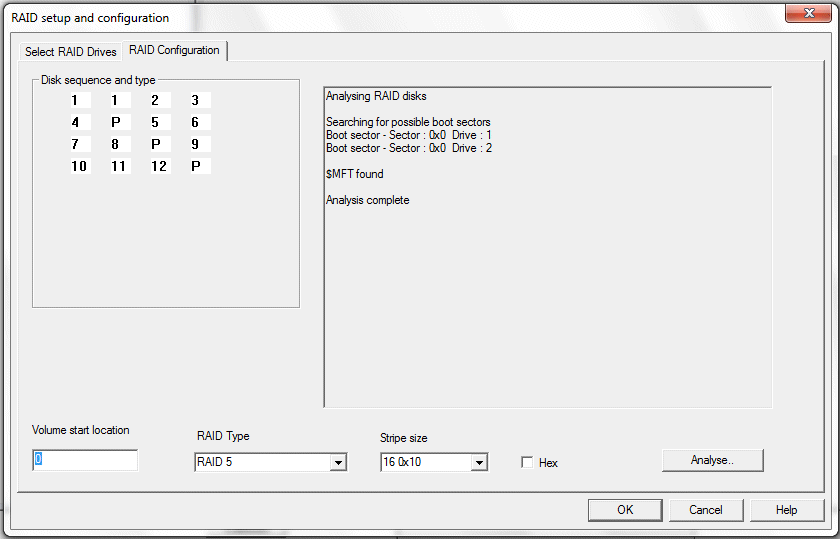|
RAID configuration
|   |
The configuration of a RAID is very important. It can be done manually, but typically, CnW automatic analysis will assist

The areas that need to be configured with the RAID are
Analyse
Some NAS drives start with both (all drives) mirrored, ie in RAID-1 configuration. The first part of the analysis is to detect this type of drive, and if found, it will automatically set the volume start location to the detected value. For instance, on a Lacie 2Big drive it will be set 0x1ea43d
The analyse function is designed to safe a large amount of evaluation and testing. Once the drives have been selected, it goes through a series of tests which will determine the following parameters. These are currently as below
The process works in several stages (currently just for NTFS disks but other formats will be developed). The stages are as follows
The analyse function will try and determine if the RAID is known to the software, in which case the parameters will be loaded automatically
Work out values by hand
Configuring a RAID is not easy. A good knowledge of file systems can help, along with being very happy reading Hex dumps. As a hint, the most useful type of file is a sequential file where the sequence is clear, and very often the best example of this is the $MFT. A $MFT may not be totally sequential but the MFT REF is a good number that increments with most MFT entries. By looking at this value one can very quickly determine the stripe size, and then try and determine the sequence between drives.